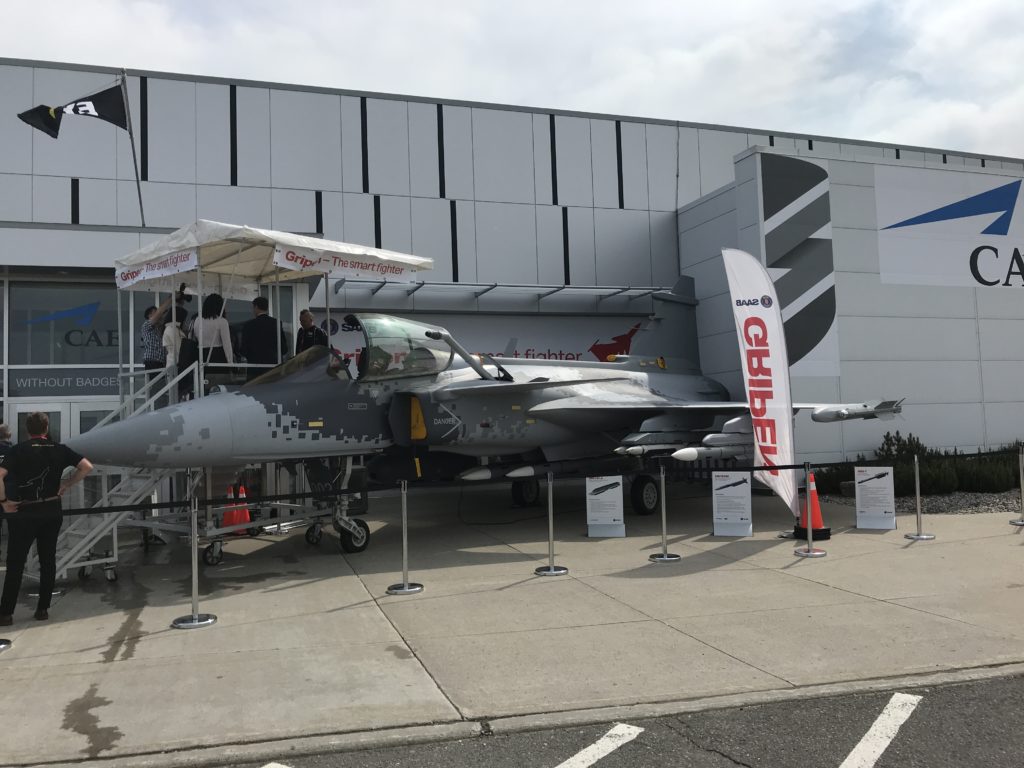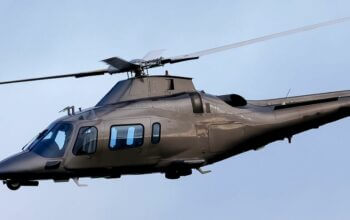Estimated reading time 5 minutes, 21 seconds.
Shortly before Defence Minister Harjit Sajjan announced on May 29 that a formal request for proposals (RFP) to supply 88 new Canadian fighter jets would be delayed again — this time to mid-July — two potential contenders said that a proposal to scrap the customary industrial benefits element of the procurement is problematic.

Jim Barnes, director of Business Development in Canada for Boeing Defense, Space & Security and Roger Schallom, the company’s St. Louis-based vice-president of International Business Development, along with Patrick Palmer, vice-president and head of Sales at Saab Canada Inc., expressed their common concern during briefings at CANSEC, the annual Ottawa trade show organized by the Canadian Association of Defence and Security Industries (CADSI).
Boeing’s contender to replace the RCAF’s legacy fleet of CF-188 Hornets is the F/A-18 Super Hornet, while Saab’s is the JAS 39 Gripen (the company had a full-scale replica parked front-and-centre outside CANSEC’s main entrance). The other contenders are Lockheed Martin’s F-35 Lightning II Joint Strike Fighter (JSF) and Airbus Military’s Eurofighter Typhoon.
Barring any further hiccups in a program fraught with political indecision and already years behind the original schedule, the RFP process overseen by Public Services and Procurement Canada (PSPC) is expected to lead to two finalists being chosen next year with a view to making a final selection in 2022.
The government had been expected to issue its RFP by May 31 after years of indecision, but that latest deadline in the troubled procurement was postponed as officials at DND, PSPC and Innovation, Science and Economic Development Canada review the industrial benefits element.
“This is proof that your feedback is heard and acted upon,” Sajjan told the CANSEC audience.
The proposed industrial benefits change was disclosed earlier this month by Richard Shimooka, a senior fellow at the Macdonald-Laurier Institute (MLI), an Ottawa-based think tank.
He said in a report published by the MLI (May 6) that the Canadian government was yielding to pressure from the United States by changing the long-established requirement that companies bidding for contracts agree to investing an equivalent amount in Canada. The fighter procurement, including in-service support, is expected to cost at least $18 billion.
Shimooka cited letters from U.S. officials that indicate “resentment and distrust towards the government of Canada had grown, particularly within the U.S. Air Force.” The letters evidently focused on the “significant strategic and economic benefits that have already been accrued from being part of the JSF program.”
However, he added, the letters also contained “an implicit (but clear) threat that Canada could be kicked out of the program if Ottawa continues with its current policy of trying to obtain guaranteed industrial benefits that, by their very nature, are not allowed under the JSF Program. . . . There was a complete lack of logic of Canada’s policy, which seemed to ignore basic facts about membership in the JSF program, including clear advantages in cost and capability that the F-35 provided.”
In his CANSEC briefing, Barnes admitted to having been “surprised by the recommended changes” in the shift in the long-standing requirement. “That policy’s been in place for decades and it’s been very successful for Canadian industry,” he replied, questioning what he called the government’s decision to “accommodate a competitor.”
Schallom added that adhering to the historic requirement for direct industrial offsets, rather than simply offering “non-binding” bidding opportunities on future contracts, would be better for Canada’s economy over the expected 30 years or more of the new fighter program. “You’re probably missing out on $30 billion-plus in guaranteed work.”
Saab’s Palmer echoed that position 30 minutes later, saying that he is concerned that the “non-binding requirement may not necessarily give Canadians the best value over the long term,” but, “until we see the final RFP (request for proposals), I’ll reserve final judgment.”
However, when asked how Saab had responded formally to the proposed change on industrial benefits, he said, “We’ve asked them for some more information as it relates to the specifics of how items are going to be measured,” but had “definitely indicated that it doesn’t necessarily encourage the best solution for Canada at the end of the day.”








